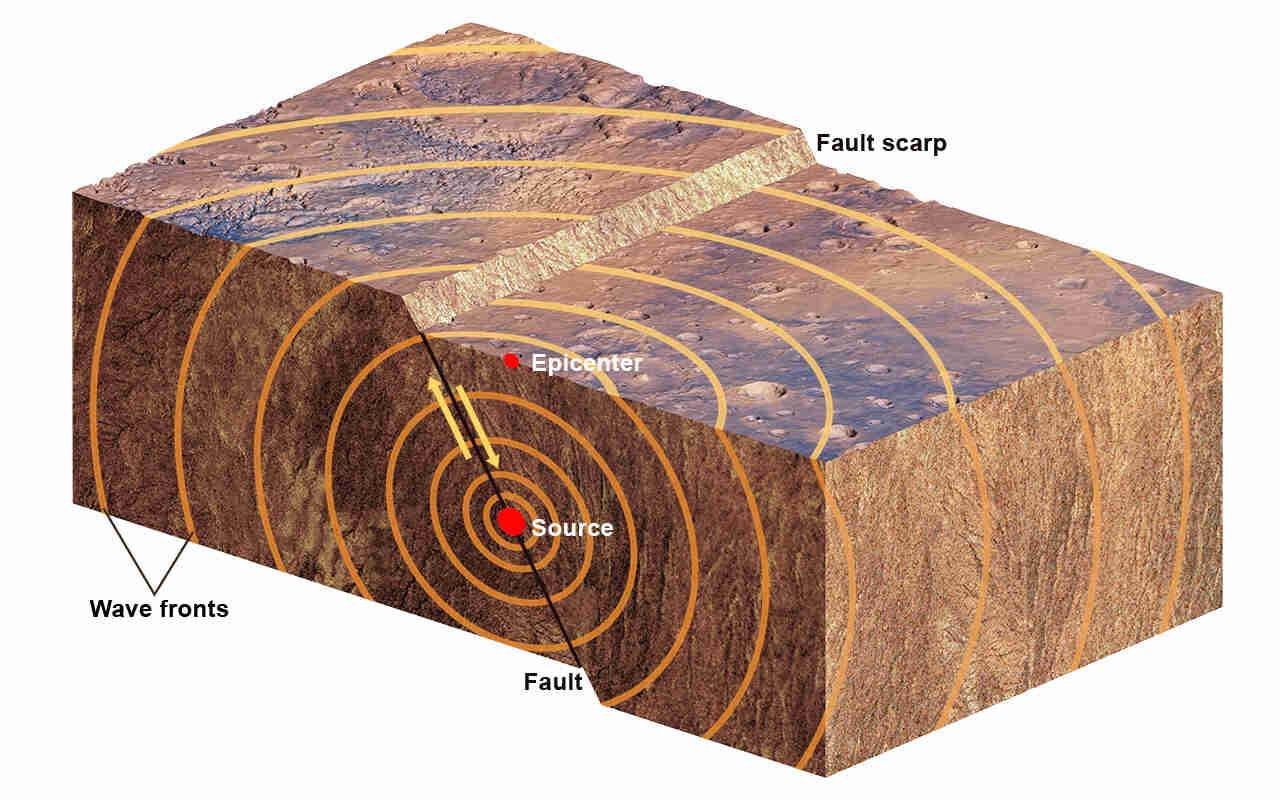
Seismic waves, often referred to as the heartbeat of the Earth, are fascinating and enigmatic natural phenomena that have puzzled scientists for years. These waves are caused by the sudden release of energy in the Earth’s crust, resulting in earthquakes, volcanic activity, and even man-made explosions. Understanding the characteristics and behavior of seismic waves is crucial for predicting and mitigating the impact of these geological events.
In this article, we will delve into the realm of seismic waves and uncover 17 intriguing facts that will not only pique your curiosity but also deepen your understanding of these mysterious forces of nature. From the different types of seismic waves to their effects on the Earth’s surface, prepare to embark on a captivating journey into the realm of seismology and uncover the secrets that lie beneath our feet.
Key Takeaways:
- Seismic waves come in different types, and they can tell us a lot about the Earth’s interior and history. They can even help us find oil and study earthquakes in faraway places!
- When earthquakes happen, seismic waves can cause buildings to shake and even trigger landslides and tsunamis. By studying these waves, scientists can learn about the Earth’s structure and predict the impact of earthquakes.
Surface waves are the slowest seismic waves.
Surface waves, also known as Love waves and Rayleigh waves, travel along the Earth’s surface and are the slowest of all seismic waves.
P-waves are the fastest seismic waves.
P-waves, also called primary waves, are the first seismic waves to be detected and travel through solid and liquid materials.
S-waves cannot travel through liquids.
S-waves, or secondary waves, are slower than P-waves and cannot pass through liquids, making them useful for determining the presence of liquid layers within the Earth.
Seismic waves can be measured using seismographs.
Seismographs are instruments that record the arrival and strength of seismic waves, providing valuable data for studying earthquakes and the Earth’s interior.
Seismic waves can travel through the Earth’s core.
While some seismic waves cannot penetrate the Earth’s core, P-waves can travel through it, providing valuable insights into the structure and composition of the core.
Seismic waves can cause buildings to shake.
When seismic waves from an earthquake reach populated areas, they can cause buildings to shake and suffer structural damage.
Large earthquakes generate more powerful seismic waves.
The magnitude of an earthquake directly affects the strength and intensity of the seismic waves it generates, with larger earthquakes producing more powerful waves.
Seismic waves can be used to locate earthquake epicenters.
By analyzing the arrival times of different types of seismic waves at various seismograph stations, scientists can accurately determine the location of an earthquake’s epicenter.
The study of seismic waves provides insight into the Earth’s interior.
Scientists use the properties and behaviors of seismic waves to study the composition, density, and temperature of different layers within the Earth.
Seismic waves can be used to image underground structures.
Using seismic reflection and refraction techniques, geophysicists can create images of subsurface structures such as oil reservoirs, faults, and rock formations.
Seismic waves can travel across continents.
Seismic waves generated by earthquakes can propagate across entire continents, allowing scientists to monitor and study seismic activity in remote regions.
Seismic waves can be used to determine the magnitude of an earthquake.
By analyzing the amplitude and duration of seismic waves, scientists can estimate the magnitude of an earthquake, providing crucial information for assessing its impact.
Seismic waves can trigger landslides and tsunamis.
The powerful motion caused by seismic waves can destabilize slopes, resulting in landslides, and the displacement of large bodies of water can generate tsunamis.
Seismic waves can travel through the Earth’s inner core.
Despite its solid nature, P-waves can travel through the Earth’s inner core, contributing to our understanding of its structure and properties.
Seismic waves can affect the behavior of underground fluids.
The passage of seismic waves through porous rocks can cause the redistribution of underground fluids, impacting activities such as oil extraction and groundwater management.
The speed of seismic waves depends on the properties of the medium.
Seismic wave velocities vary depending on the material they pass through, allowing scientists to deduce important information about the subsurface geology.
Seismic waves can be used to study the Earth’s history.
By analyzing the seismic signatures left by past earthquakes, scientists can gain insights into the geological history and tectonic activity of a region.
Conclusion
In conclusion, seismic waves are a fascinating and enigmatic aspect of our planet’s behavior. They hold the key to understanding the inner workings of the Earth and play a crucial role in monitoring and predicting earthquakes. From the different types of seismic waves to their unique properties, the world of seismic waves is a complex and ever-evolving field of study. By unraveling the mysteries behind seismic waves, scientists and researchers can enhance our ability to mitigate the devastating effects of earthquakes and improve the safety and resilience of communities worldwide.By delving into the depths of seismic waves, we gain valuable insights into the dynamic forces that shape our planet. The knowledge gained from studying these waves not only deepens our understanding of Earth’s structure but also contributes to advancements in various fields, from engineering to disaster management. As we continue to explore the intricate nature of seismic waves, we move closer to unlocking the secrets of our planet and safeguarding our future.
FAQs
1. What causes seismic waves?
Seismic waves are primarily caused by the sudden release of energy within the Earth’s crust, typically resulting from tectonic activity, such as earthquakes or volcanic eruptions.
2. How fast do seismic waves travel?
The speed at which seismic waves travel varies depending on the type of wave and the medium they pass through. Generally, P waves travel faster than S waves, and surface waves are slower than both.
3. Are seismic waves only found on Earth?
Seismic waves are not exclusive to Earth. They have been detected on other celestial bodies, such as the Moon and even Mars, providing valuable insights into the geological processes of these celestial objects.
4. How do scientists measure seismic waves?
Scientists use seismometers, which are sensitive instruments that detect and record the vibrations caused by seismic waves. These recordings, known as seismograms, help determine various properties of the waves, such as their amplitude, frequency, and arrival time.
5. Can seismic waves be used for any practical applications?
Absolutely! Seismic waves play a crucial role in earthquake monitoring, allowing scientists to assess the magnitude and location of earthquakes. They are also utilized in various industries, such as oil exploration and geothermal energy production.
Was this page helpful?
Our commitment to delivering trustworthy and engaging content is at the heart of what we do. Each fact on our site is contributed by real users like you, bringing a wealth of diverse insights and information. To ensure the highest standards of accuracy and reliability, our dedicated editors meticulously review each submission. This process guarantees that the facts we share are not only fascinating but also credible. Trust in our commitment to quality and authenticity as you explore and learn with us.


